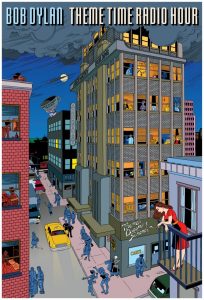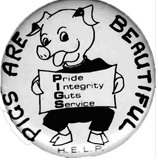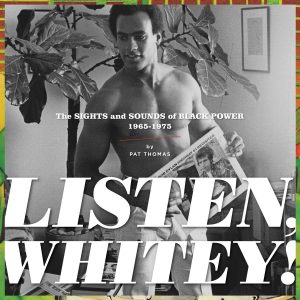By Paul Robert Thomas & Kim E. Hatton
This article continues from Bob Dylan’s Odyssey: The Basement Tapes, Part 1
The title of Get Ya Rocks Off and the way it’s performed hardly needs explanation. Or does it? It’s unambiguously sexual. Or is it? ‘Old maids’ could either be a derogatory reference to a couple of gay men, or to lesbian sex.
Fats Domino immortalized Blueberry Hill in 1954/5 drawling with bovine contentment ‘I found my thrill on Blueberry Hill’ and he wasn’t referring to the scenery!! Now, just over ten years later, Dylan’s narrator pays the place a visit and reports ‘one man turned to the other man and said …. ‘A homosexual encounter is heavily implied, and driven home with reference to ‘Mink Muscle Creek’ in the next verse, which could be Gay slang for arse, or again, straight slang for vagina. But if Get Ya Rocks Off can only ever be interpreted as a sexual command or invitation (there has been some disagreement on this) then it’s now the last line which is disturbing.
"Well, you know, we was cruisin' down the highway in a Greyhound bus All kinds-a children in the side road, they was hollerin' at us sayin’ Get Ya Rocks Off (Get em off!) Get Ya Rocks Off-a-me (Get em off!)"
Someone has suggested that this is just a reference to the children of southern shantytowns, ragged and dirty, hungry’ and rude. We’ll come back to this at the end of discussing this song.
Another suggestion makes them child prostitutes. They are in ‘the side streets’ – on the edges of society, (another possible interpretation of ‘down by the river’ in the verse quoted earlier. They shout out the refrain of the title. Then again the drawing in Lyrics depicts a man throwing rocks from a pile on top of a van.
So maybe the ‘Rocks’ are ‘oppression’s’, acts of sexual invasion, or rocks of social repressiveness. (The only thing the drawing calls to mind is a scene from a riot). ‘Cruising’ is sexual slang for importuning, seeking out sex. So are these child prostitutes?
It was written at a time when The Velvet Underground; Warhol’s Factory and sexual libertarianism were all in the ascendant. The interpretation hinges on the phrase ‘Get Ya Rocks Off’. If Jagger sang it there would be no doubt that it was a sexual invitation. But it can also mean ‘get loose’, drop your reserve, don’t be so oppressive. And each time that the phrase is used, it’s used Personally and negatively, Get Ya Rocks off-a me. (But as John Baldwin has suggested, in recent conversation, Dylan’s grammar is such that he might mean “get ya rocks onto me’.
In conclusion the song is either a demand for sex, a refusal of sexual advances, or a demand for personal freedom and respect. Maybe the song is an archetypal shout for liberty against oppression. An interpretation, which came to one of us, suggests that the song is a montage, cinematic in its imagery, nonlinear in its chronology. Snippets of sexual encounters perhaps heard of or experienced in the craziness of that era fill one frame at a time till, in the final frame, we see what Greil Marcus might call a slice of Americana. The bearded, matted face of the narrator who has been recollecting these scenes looks out through the smeared window of his millionaire’s touring bus, and sees another world, poor, undernourished but spirited. Ragged kids run alongside shouting “Get Ya Rocks Off!”. Suspend your Bacchanalia and Get Real! (Or even applied to interpreters of Dylan, ‘Stop all your intellectual masturbation and get out on the streets.’)
Million Dollar Bash could also be read as a song about sexual frustration/obsession. ‘I’m hittin it too hard my stones won’t take’ sounds like a masturbation reference, and ‘come now sweet cream’ a seminal reference – if you’ll excuse the pun! Listening to it and reading the lyrics it seems to be describing a boozy sex-soaked apocalyptic orgy to one of us. Going out with a bang not a whimper. Dumb blondes, Silly Nelly, (a ‘Nelly’ is archaic slang for a male prostitute) and Turtle all remind us of the freaks on the ‘official’ Basement Tapes cover as well as Warhol’s retinue. But what about the following stanzas?
"The louder they come The harder they crack" "Well I looked at my watch I looked at my wrist Punched myself in the face with my fist” "I look my potatoes down to be mashed Then l made it over To that million dollar bash"
In three of the six verses ‘The Bash’ is in the future. What it is, however isn’t clear. Someone says ‘Orgy’; another says ‘Judgment Day’. But ‘the louder’ they come is a paraphrase of ‘The bigger they are the harder they fall’, a reference to the vanity of pride and self-importance. And ‘Punched myself in the face…’ suggests trying to wake up. Interpret it how you will. If it’s about sexual encounters then they seem pretty futile and vain, ‘Hello/Goodbye, Push/Crash’ ‘But we’re all gonna make it to that Million Dollar Bash’. When ya’ll come to your senses Bob?
In Silent Weekend the woman is the dominant partner, e.g. ‘My baby she gave it to me’ ‘She’s actin tough and hardy’ ‘She’s rockin’ and a reelin’/Head up to the ceiling’ etc. But is ‘she’ a woman? ‘Head’ (Penis) up to the ceiling might refer back to Temporary Like Achilles ‘pointing to the sky and hungry like a man in drag’. Alternatively she could he acting tough and hardy because she’s in the line of women like the ‘steam shovel mama’ and ‘junkyard angel’ of Highway 61 Revisited.
You Ain’t Going Nowhere, popularized by The Byrds and neutered by Joan Baez, appeared as a song almost completely rewritten as an up-tempo celebration of the pastoral life but with much more obscure lyrics on Bob Dylan’s Greatest Hits vol 2. Here it is delivered with a laconic humour with the chorus ‘Whoa-eee ride me high’ sounding like a jaded, cynical request for a good fuck before tomorrow, ‘the day (when) my Bride’s gonna come.’ No double-entendre on ‘come’ here, but who is fucking who in the absence of the ‘bride’? And “we’ll climb that hill no matter how steep, when we get up to it”? We’ll face tomorrow when it comes but, for now, ‘Ride me high’ while we have time. Any sexualisation of this song is wholly dependent on a reading of ‘Ride me high’ = Fuck me hard. So is Dylan’s narrator/persona referring to going back to faithful monogamy? (If so where is he keeping his mistress? Not in the kitchen at this stage). We’ll return to this song with a fuller interpretation later.
The line followed by these songs could be congruent with the tradition they are rooted in – Blues, Burlesque, Jazz and ‘Race Music’, (and of the type of life and characters described in Levon Helm’s story of The Band This Wheel’s On Fire.) The tradition drew a thin veil over sex by describing it in innocuous metaphors or apparently meaningless slang. Listen to Bessie Smith singing ‘I love it when my Daddy takes me for a Buggy Ride’ and try to convince yourself that she’s celebrating the joy of increased mobility!!!! (It seems a good time to mention Bessie Smith because in all this ‘analysis’ maybe we’re not conveying how much deadpan humour and sly ribaldry there is on this vast collection of songs.) But we are aware of many who find that any suggestion of sexual innuendo in Dylan’s songs is anathema to them. But how would they interpret the following:
"Well you can tell everybody' Down in ol' Frisco Tell em Tiny Montgomery says Hello” "Now ev’ry boy and ev’ry girl's Gonna get their bang Cause Tiny Montgomery’s Gonna shake that thing Tell evr’body Down in old Frisco That Tiny Montgomery’s comin' To say hello" "Scratch your dad Do that bird Suck that pig And bring it on home' Pick that drip And bake that dough Tell em all That Tiny says hello"
Michael Gray has written that some interpreters of Dylan have seen ‘Tiny Montgomery’ as about ‘wielding power’. And someone out there will say he’s God or Jesus. We invite interpretations on this song because if we’re struggling – help us with our load. That said, it seems like Tiny is a randy little bugger who is happy fucking either sex and when he ‘shakes that thing’ well, People Get Ready there’s more than a-train-coming! ‘Suck that pig’ (Fellatio with a cop’?) ‘Do that Bird’? ‘Bring it on home’? San Francisco, notorious for its sexual license, Gay population and carnival atmosphere, seems the ideal setting for such debauchery and even Sade-Masochistic acts. (Does the pig want to be greased?). But maybe Tiny Montgomery is just an old forgotten Blues singer, like Little Walter, who Dylan and The Band wanted to pay homage to. Maybe. Maybe. Please Mrs. Henry has been dealt with playfully in one of Michael Gray’s chapters from Song & Dance Man, as fitting the ‘scatology obsession theory’ which, paraphrased, goes something like this:
The male narrator is playing at little boy lost, drunk and with his bladder bursting, he falls to his knees begging Mrs. Henry to take him to his room. His ‘crane’ (penis is gonna leak, his ‘stool’s’ (turd) squeaking, he’s not going to be able to hold on much longer, and hasn’t got a dime to pay to get in to ‘the little boys room’.
Now that’s power play. And Mrs. Henry is doing the wielding. But couldn’t ‘Down on my knees’ suggest a submissive sexual position? And Mrs. Henry? A sadistically powerful woman or, given the juxtaposition of female title with male name, a transvestite/transsexual? But, doesn’t Gray have a point? This sounds ‘Just Like A Man’ who has been hitting the bottle too hard and now wants Mama to take care of the consequences. He breaks just like a little boy. No? As the title of the chapter from Michael Gray’s Song & Dance Man says, however, ‘Theories-Anyone Can Play’. So, put pen to paper.
The Basement Tapes can be plumbed over and over again for meaning and often, in sharing this article, the authors have violently but creatively disagreed. Is ‘mound’ in Lo and Behold a reference to an erection, what is meant by ‘chicken town’? Another interpretation of chicken, according to American slang, is a young or fresh, (virginal) young woman. Read Charles Bukowski’s short story, Life In A Texas Whorehouse. The phrase never appears there but all is not what it seems. The whole town is a whorehouse except for the pimps, portrayed by various liars, hypocrites and rednecks. Further, an American at Sussex University has confirmed that ‘Chicken Town’ has been used in reference to parts of America, or ‘Red Light’ districts Given these interpretations of ‘chickens’, is this a song of sexual excess?
“Get me out of here my dear man!”
And exhaustion? And ‘dear man’? Effete? Or a pastiche of Anglo/Southern States courtesy? In the process of each of us working on our own ‘angle’, then sharing our ideas we began to form a larger picture, and a theme seemed to be emerging. If such songs as those above, and others which space hasn’t permitted us to treat in enough depth, could be viewed as ‘songs of debauchery’ what of the others, Sign On The Cross, Too Much of Nothing, I Shall Be Released’?
Many have commented extensively and persuasively on the sexual imagery in Dylan’s songs and it is there in many of them. But is sex and excess always viewed positively? Goin’ to Acapulco features a whore (Rose Marie) but the debauchery’ begins to lose its amoral tone. Unease can be detected
“It's a wicked life but what the hell The stars ain’t falling down. I'm standing outside the Taj Mahal I don’t see no one around”.
‘It’s a wicked life’ might be read as It’s a sinful life – I’m listening as I write, to the way it’s sung and I’m not convinced by the bravado, vis. it’s ‘wrong’ but ‘what the hell the stars ain’t fallin’ down’…. memories of being a kid and testing the validity of what I’d been told about ‘GOD’, and saying/praying …. ‘I don’t believe you exist’ and being relieved/disappointed when the ‘stars didn’t fall down’. In the song, Dylan seems to be saying ‘it’s a wicked life but’… it’s only sex, a bit of fun, but he doesn’t sing it as though he believes it. The song is performed as a dirge, a lament, carnality offers none of the comfort which is craved. Rose Marie is out for what she can get, ‘likes to go to big places,’ dependent on Dylan to pay. Love stands alone, abandoned. The Taj Mahal, a Tomb/Memorial, was built by a heartbroken Indian Prince to immortalize the love he felt for a young wife who died in childbirth It is a paradigm of unconditional, ‘agape’, love. Dylan suggests nobody is interested in such love.
Maybe this explains why, later, he would change his way of thinking and rant against the Bath Houses in San Francisco (Note 9). Guilt? Self-loathing? (Neville Symington has pointed out that Jesus’s attacks against the pharisees was an attack on his own ‘Shadow’, the part of himself he couldn’t own) (Note 10). As a convert to Fundamentalist Christianity, Dylan would undoubtedly have made a public confession of everything ‘sinful’ to The Church (Vineyard Fellowship) – but in this song a particular moral slant is absent:- ‘I try to tell it like it is’. And in Lo and Behold the stanza, ‘He asked me for my name I gave it to him right away’, which might be interpreted as a rash giving away of the narrator’s sex, integrity or self is followed by a line of remorse ‘I hung my head in shame’ (I associate this with the line in I dreamed I Saw St Augustine ‘I bowed my head and cried’.)
So, while the above songs (including Acapulco‘ and the unexplored Clothes Line Saga, could or could not have sexual references it’s just as possible to read or hear them differently. Art works through its multiplicity of ‘meanings’. Clothes Line Saga, for example, may be heard as a dig at small-town Middle America (Minneapolis?) or a pastiche off Ode To Billy Joe, as Clinton Heylin suggests (Note 9). But many of the songs stand out as being songs of debauchery because, as well as their language and the way the songs are performed, they are in stark contrast to many other songs of the collection. They suggest a tension, a conflict, so that the whole collection begins to make sense in the context of Dylan’s life prior to recording them following a long period of self examination.
The series continues…
Untold Dylan: who we are what we do
Untold Dylan is written by people who want to write for Untold Dylan. It is simply a forum for those interested in the work of the most famous, influential and recognised popular musician and poet of our era, to read about, listen to and express their thoughts on, his lyrics and music.
We welcome articles, contributions and ideas from all our readers. Sadly no one gets paid, but if you are published here, your work will be read by a fairly large number of people across the world, ranging from fans to academics who teach English literature. If you have an idea, or a finished piece send it as a Word file to Tony@schools.co.uk with a subject line saying that it is for publication on Untold Dylan.
We also have a very lively discussion group “Untold Dylan” on Facebook with around 6500 active members. Just type the phrase “Untold Dylan” in, on your Facebook page or follow this link
You’ll find some notes about our latest posts arranged by themes and subjects on the home page of this site. You can also see details of our main sections on this site at the top of this page under the picture. Not every index is complete but I do my best.



